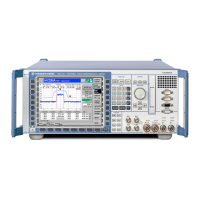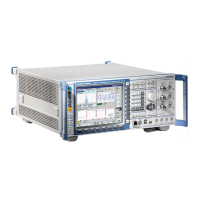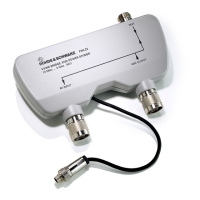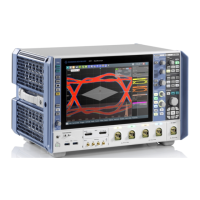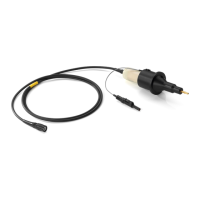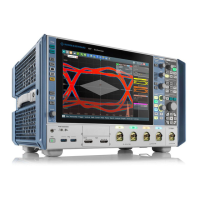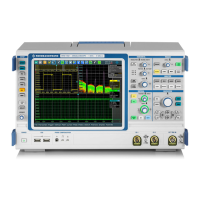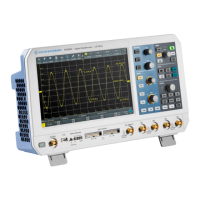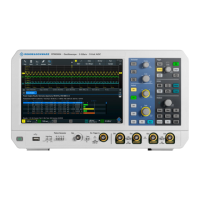R&S CMU Instrument Design and Function Description
1100.4903.82 3.11 E-5
Functions
On the transmitter side (TX), the RF FRONTEND serves the purpose
o
f distributing internal RF signals to the outside to the various N-
connectors (RF1, RF2, RF3OUT) and attenuate or amplify them
according to the selected output and level.
On the receiver side (RX), its purpose is to internally distribute external
RF signals from the different N-connectors (RF1, RF2, RF3OUT) and
attenuate or amplify them according to the selected input and the
applied level.
Since high levels and powers up to 50 W can be fed in on the receiver
side (RX), the RF FRONTEND is equipped with power attenuators and
the cooling system with the fan described above, which is controlled by
the temperature at the power attenuators.
The RF FRONTEND additionally features two broadband power
measuring diodes, which permit to measure the power applied at the
N-connectors RF1, RF2, RF4IN even in pulsed operation.
RXTX BOARD1
The RXTX BOARD1 constitutes the central RF board which contains all circuit parts for conversion from
RF to IF both for the transmitter (TX) and receiver (RX).
Design
The RXTX BOARD1 is designed as plug-in module with a silver-coated
two-shell aluminum casing fixed with several screws.
Cooling system
This casing is equipped with cooling fins at the front and rear which are
provided with a cover sheet each so that two special cooling ducts are
produced. These cooling ducts are evenly cooled by the air flow of the
instrument fan irrespective of neighboring modules.
This efficient cooling is required since a very high degree of integration
and a large portion of fast RF components are implemented on this
board.
Control and supply
Control and voltage supply of the RXTX BOARD1 are effected via a
96-pin FUTURE-bus connector from MOTHERBOARD1.
Complete function
For conversion from RF to IF, the transmitter side (TX) is implemented
on one side of the multilayer PC board and the receiver side (RX) on
the other side on the RXTX BOARD1. This strict separation of the
functions permits to achieve high decouplings as they can usually only
be achieved with two separate modules.
Transmitter functions
On the transmitter side (TX), an IF signal with 13.85 MHz is applied at
the MMCX connector IF3TX1 (top of module) of the RXTX BOARD1,
which is provided by the DIGITAL BOARD.
On the RXTX BOARD1, this signal is taken via various amplifier
stages, attenuator pads and filters and finally set to the desired RF
frequency by means of triple signal conversion (IF3, IF2, IF1). This is
necessary to obtain a high image-frequency rejection.
At the TX output, a switchable attenuator with fine stepping and large
attenuation range is used to set the RF signal amplitude according to
the level selected.
The RF signal is finally taken to the RF FRONTEND at the SMA
connector RFTX1 (bottom of module).
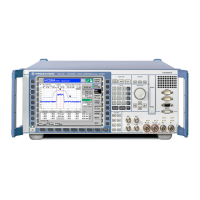
